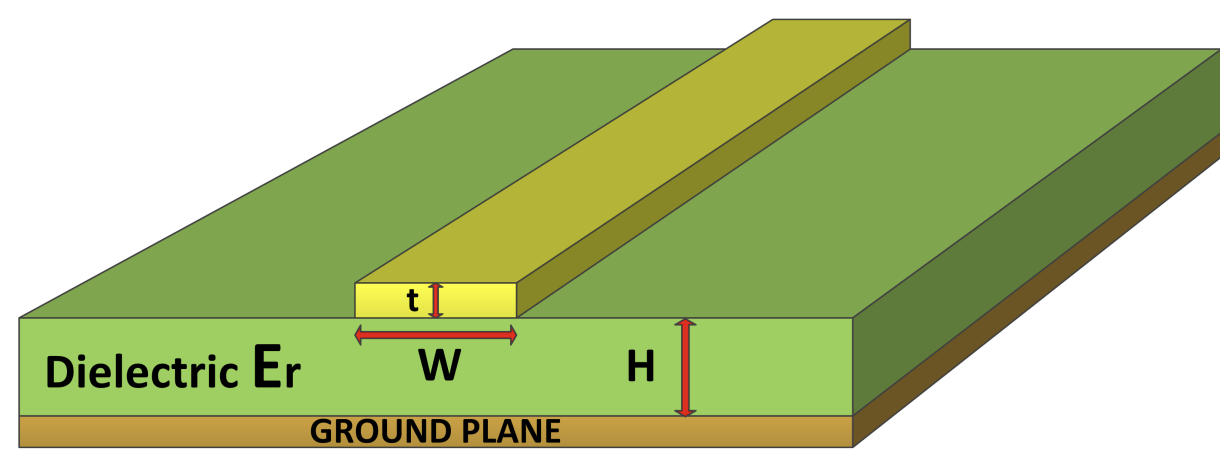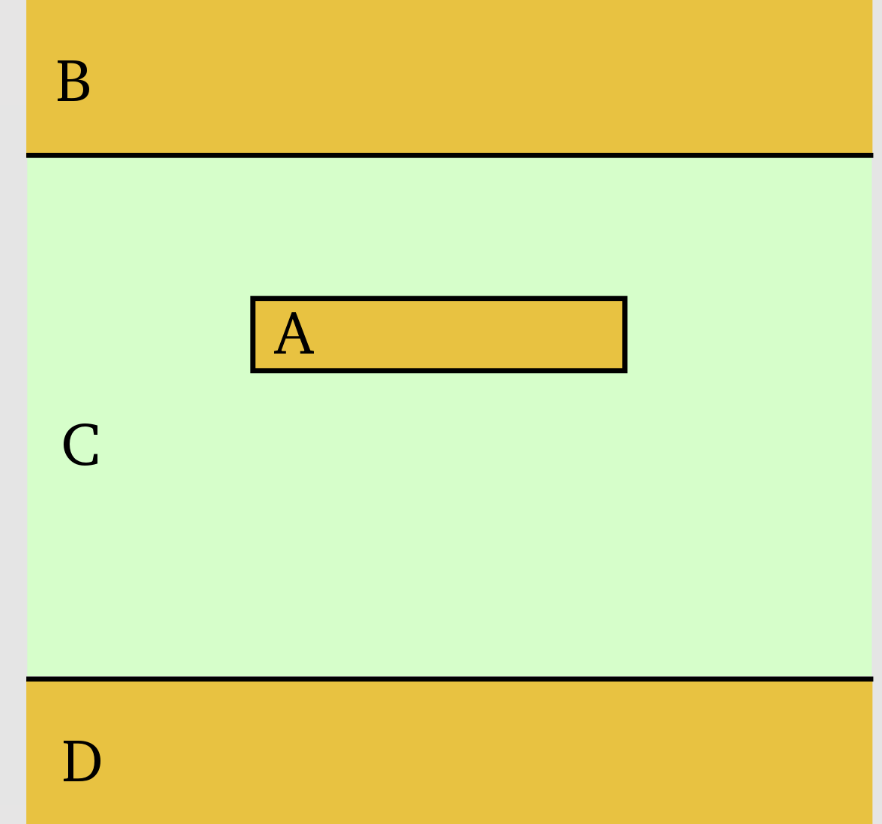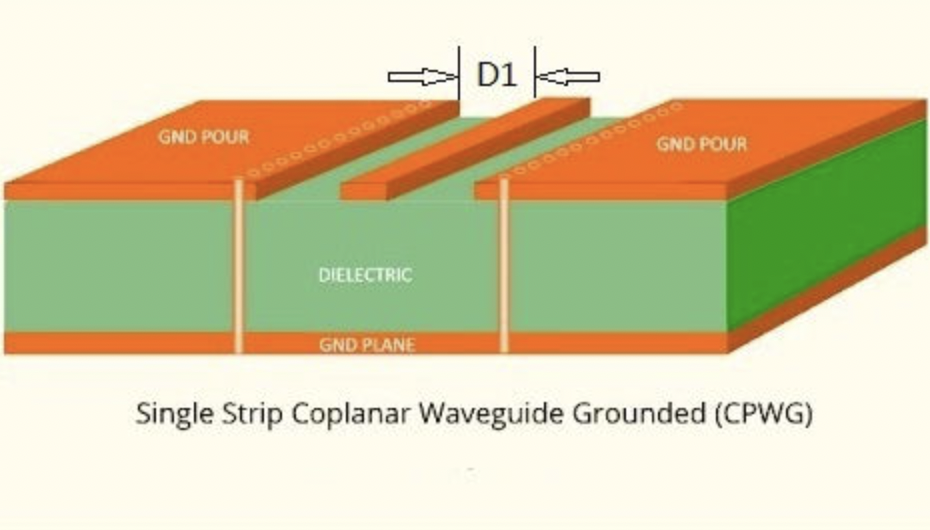Understanding different types of PCB transmission lines is crucial for designing high-performance electronic circuits. Transmission lines play a vital role in transmitting electrical signals efficiently. Let's explore two common types of PCB transmission lines: microstrip, stripline and coplanar waveguide along with their advantages and disadvantages.
Microstrip transmission lines are a type of electrical conductor used in printed circuit boards and other high-frequency electronic circuits to transmit electrical signals from one point to another. They consist of a conducting trace or strip placed on the surface of a dielectric substrate, with a ground plane usually located on the opposite side of the substrate.

Easy Implementation: Microstrip lines are relatively easy to fabricate, making them a popular choice for many PCB designs.
Cost-Effective: They are cost-effective due to their simple construction, making them suitable for high-volume production.
Compact Design: Microstrip lines are well-suited for PCBs with limited space, as they can be placed on the surface of the board.
Good Performance at Lower Frequencies: Microstrip lines perform well at lower frequencies and are suitable for many digital and analog applications.
Susceptible to Noise: Microstrip lines are more susceptible to electromagnetic interference (EMI) and radiation, especially at higher frequencies.
Limited Isolation: The ground plane is on the opposite side of the PCB, leading to limited isolation and higher radiation.
Higher Signal Loss: Microstrip lines may exhibit higher signal loss compared to other transmission line types, particularly at higher frequencies.
Microstrip transmission lines are widely used in various electronic circuits, including RF (radio frequency) and microwave circuits, as well as digital circuits with high-speed signal propagation.
Stripline transmission lines are another type of electrical conductor commonly used in high-frequency electronic circuits, especially those requiring superior signal integrity and reduced electromagnetic interference (EMI). Stripline transmission lines offer advantages in terms of isolation, signal quality, and radiation control, making them suitable for critical applications.

Isolation and EMI Control: The presence of ground planes on both sides of the conductive traces significantly reduces electromagnetic interference and radiation. This makes stripline a preferred choice for applications where EMI must be minimized.
Better Signal Integrity: Stripline transmission lines have lower signal loss compared to microstrip, especially at higher frequencies. This makes them suitable for high-frequency and high-speed applications, where signal quality is crucial.
Reduced Crosstalk: The sandwich structure of stripline helps reduce crosstalk between adjacent transmission lines, leading to improved circuit performance.
Suitable for Critical Applications: Stripline is commonly used in RF (radio frequency), microwave, and high-speed digital circuits, where maintaining signal quality and minimizing EMI are critical.
Complex Design: Designing stripline transmission lines requires more attention to detail and is often more complex than microstrip.
Fabrication Challenges: The sandwich structure of stripline may be more challenging to fabricate, leading to potentially higher manufacturing costs.
Space Requirements: Stripline requires additional layers in the PCB, increasing the space needed, which might be a limitation in compact designs.
Despite the design complexity and potential manufacturing challenges, stripline transmission lines are an excellent choice when signal integrity and EMI control are paramount, making them particularly valuable in high-frequency and critical electronic applications.
A Coplanar Waveguide (CPW) transmission line is a type of high-frequency transmission line used in microwave and RF (radio frequency) circuits. It is characterized by a specific geometry that offers advantages in terms of signal propagation, ease of design, and integration with other components. The key feature of CPW is that all conductive elements, including the signal trace and ground, are situated on the same plane, providing unique electrical properties and simplifying the design process.

Ease of Design: CPW is relatively straightforward to design because all the conductive elements are on the same plane, simplifying the layout process compared to some other transmission line types.
Good Isolation: The presence of ground planes on either side of the signal trace provides good isolation, reducing electromagnetic interference and crosstalk.
Wideband Characteristics: CPW can operate over a wide range of frequencies, making it suitable for broadband applications.
Integration with Active Components: CPW allows for easy integration with active components such as transistors and diodes, making it a versatile choice for various circuit designs.
Lower Radiation: CPW has lower radiation compared to some other transmission line types, contributing to better signal integrity.
Higher Losses: CPW may have higher losses compared to certain transmission line types, which could be a concern in some high-frequency applications.
Limited Power Handling: CPW may have limitations in terms of power handling, especially for applications requiring high power levels.
Substrate Considerations: The choice of dielectric substrate material can impact the performance of CPW transmission lines, and careful selection is necessary for optimal results.
Each type of transmission line has its strengths and weaknesses, and the choice depends on the specific requirements of the circuit, the frequency range, space limitations, and the desired level of signal integrity and EMI control. Proper selection and design consideration are crucial to achieving optimal performance in PCB designs.
Guiding You to PCB Success! Discover the Perfect Transmission Lines for Your Project with VictoryPCB. Expert Consultation, Custom Solutions, and Reliable Performance Await. Contact us today if you have any questions about pcb manufacturing.
By continuing to use the site you agree to our privacy policy Terms and Conditions.
Recruit global agents and distributors Join us